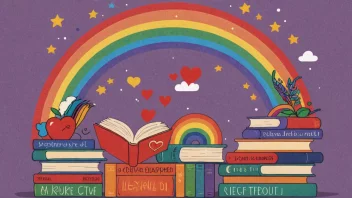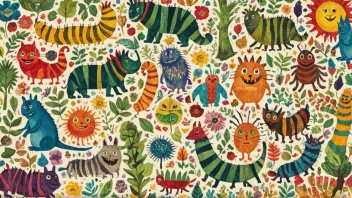Folklore and fairy tales have captivated the minds and imaginations of children and adults alike for centuries. They serve not only as entertaining stories but also as vessels for cultural heritage, moral lessons, and psychological insights. In a world where technology often overshadows traditional storytelling, the importance of these narratives remains significant. This article delves into the rich tapestry of folklore and fairy tales, examining their origins, themes, and enduring appeal. We will explore various genres, analyze key stories, and discuss their impact on literature and society.
Understanding Folklore and Fairy Tales
Folklore encompasses a broad spectrum of stories, traditions, and customs passed down through generations, often orally. It reflects the values, beliefs, and experiences of a community. Fairy tales, on the other hand, are a specific subset of folklore typically characterized by magical elements, fantastical creatures, and moral lessons. While both genres share common roots, they serve different purposes within cultural contexts.
The Origins of Folklore
Folklore has its roots in the everyday lives of people. It includes myths, legends, fables, and fairy tales, each serving a unique purpose. Myths often explain natural phenomena, while legends recount the deeds of historical figures. Fables, short tales featuring animals with human traits, impart moral lessons. The oral tradition of storytelling was the primary means of preserving these narratives before the advent of written language.
Fairy Tales: A Closer Look
Fairy tales, though often seen as light-hearted children's literature, are rich with deeper meanings. They typically involve a protagonist facing challenges, often against malevolent forces, before ultimately achieving a form of resolution or transformation. Common motifs include the battle between good and evil, the hero's journey, and the significance of choice and consequence.
Thematic Analysis of Folklore and Fairy Tales
One of the most compelling aspects of folklore and fairy tales is their ability to convey complex themes through simple narratives. Here, we explore some prevalent themes found in these tales.
The Hero's Journey
The archetype of the hero's journey is a recurring theme in many fairy tales. Joseph Campbell, in his book 'The Hero with a Thousand Faces', outlines the stages of the hero's journey, which often includes a call to adventure, facing trials, receiving aid, and returning transformed. Stories like 'Cinderella' and 'The Hobbit' exemplify this journey, showcasing the protagonist's growth and the eventual triumph over adversity.
Morality and Ethics
Many fairy tales serve as cautionary tales, highlighting moral lessons. The story of 'Little Red Riding Hood' warns against disobedience, while 'The Boy Who Cried Wolf' teaches the importance of honesty. These narratives often reflect societal values and expectations, making them relevant across generations.
The Role of Feminism and Gender
Fairy tales often depict traditional gender roles, with female characters typically portrayed as passive or in need of rescue. However, modern adaptations have begun to challenge these stereotypes, showcasing strong, independent female protagonists who defy societal norms. Stories like 'Maleficent' and 'Frozen' present complex female characters who navigate their own destinies.
Global Perspectives on Folklore and Fairy Tales
Folklore and fairy tales are universal, yet each culture has distinct narratives that reflect its unique values and traditions. Here, we explore some notable examples from around the world.
European Fairy Tales
European fairy tales, particularly those popularized by the Brothers Grimm and Hans Christian Andersen, have shaped global perceptions of this genre. Tales such as 'Snow White', 'Hansel and Gretel', and 'The Little Mermaid' are steeped in cultural symbolism and moral lessons. These stories often reflect the historical context of their origins, addressing issues such as class struggle, gender dynamics, and the human condition.
Asian Folklore
Asian folklore presents a rich tapestry of narratives that often intertwine with spiritual beliefs. For instance, 'The Tale of the Bamboo Cutter' from Japan is considered one of the oldest fairy tales and features themes of love, loss, and the impermanence of life. In India, stories from the 'Panchatantra' use animal characters to impart wisdom on human behavior and ethics.
African Folktales
African folklore is deeply rooted in oral traditions, with stories that often emphasize community and the interconnectedness of life. Anansi the Spider, a trickster figure, features prominently in West African tales and serves as a symbol of wit and resilience. These stories often carry moral lessons and reflect the cultural values of the communities from which they originate.
The Enduring Appeal of Folklore and Fairy Tales
Despite the passage of time and the evolution of storytelling mediums, folklore and fairy tales continue to resonate with audiences. Their enduring appeal can be attributed to several factors:
Relatable Themes
At their core, these stories address fundamental human experiences—love, loss, bravery, and morality. Readers can relate to the characters and their struggles, allowing them to find meaning in the narratives.
Cultural Significance
Folklore and fairy tales serve as cultural artifacts, preserving the history and values of societies. They provide insight into the collective psyche of a community, making them valuable for both cultural preservation and education.
Adaptability
The flexibility of these narratives allows them to be reinterpreted across generations. Modern adaptations, films, and retellings breathe new life into classic tales, ensuring their relevance in contemporary society.
Conclusion
Folklore and fairy tales are more than mere entertainment; they are powerful tools for understanding culture, morality, and the human experience. Through their enchanting narratives, they invite us to explore different worlds while reflecting on our own. As we continue to share and adapt these stories, we preserve not only the tales themselves but also the rich tapestry of human experience they represent. Embracing the magic of folklore and fairy tales can ignite a passion for reading and inspire future generations to carry these narratives forward.






